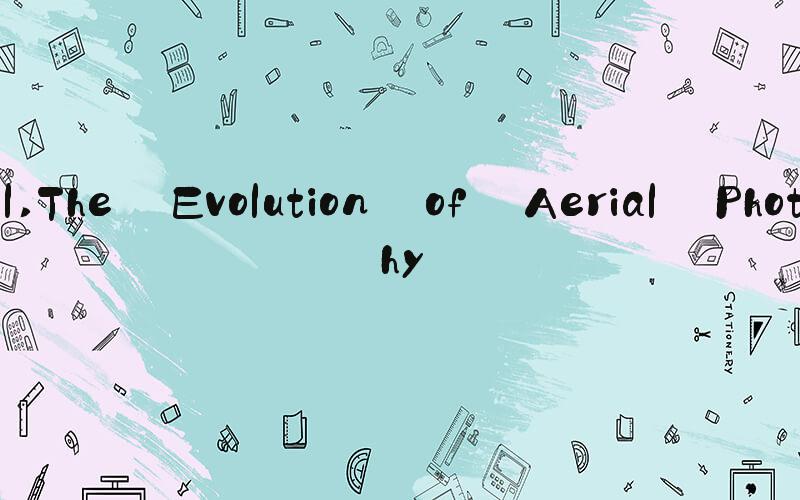
 Aerial: Exploring the Wonders of the Sky
Aerial: Exploring the Wonders of the SkyThe sky has always been a great mystery and source of inspiration to mankind. From the mythologies of ancient civilizations to the modern-day exploration of space, humans have always been fascinated by the vast expanse above our heads. While we may not be able to venture into outer space, we can explore aerial views from a closer range right here on Earth. Aerial photography and videography have allowed us to capture amazing perspectives on the world around us, and in this article, we will dive into the wonders of aerial exploration.
The Evolution of Aerial PhotographyAerial photography has come a long way since the first camera attached to a kite was flown by the French photographer Gaspard-Félix Tournachon in 1858. Early aerial photography was expensive, time-consuming, and dangerous. Pilots had to fly at low altitudes to capture images, exposing themselves to the risk of collisions or accidents. The development of remote-controlled drones and high-quality digital cameras has revolutionized the field of aerial photography, making it more accessible and safer than ever.
What Can Aerial Photography Show Us?The beauty of aerial photography is the unique perspective it offers on the world around us. Aerial images not only show us the landscape as a whole, but also the intricate details that are often hidden from the ground. From the patterns of city blocks and highways, to the colors and textures of natural formations like mountains and coastlines, aerial photography captures the essence of the environment in ways that are impossible to experience from the ground. It is also a powerful tool for documenting environmental changes and illustrating the impacts of human activity on our planet.
Applications of Aerial PhotographyThe uses of aerial photography are vast and varied, ranging from scientific research to commercial advertising. In agriculture, aerial imagery can be used to monitor crop health, predict yields, and detect pests or diseases. In urban planning, aerial photography is used to create detailed maps and 3D models of cities, informing decisions about transportation, land-use, and development. Aerial photography is also used in real estate, tourism, filmmaking, and many other industries.
The Future of Aerial ExplorationAs technology continues to advance, the possibilities for aerial exploration are endless. The development of artificial intelligence and machine learning algorithms will enhance the capabilities of drones and other aerial vehicles, allowing for more automated and efficient data collection. Virtual reality and augmented reality technologies will allow us to experience aerial views in ways we never thought possible. And as space travel becomes more accessible, we may one day venture even further into the skies.
ConclusionAerial photography and exploration have opened up a whole new world of possibilities for us to explore and marvel at. From capturing stunning images of our planet, to advancing scientific research and aiding in various industries, the uses of aerial photography are both practical and inspiring. As we continue to develop new technologies and techniques, the skies above us will continue to yield more secrets and wonders to discover.
